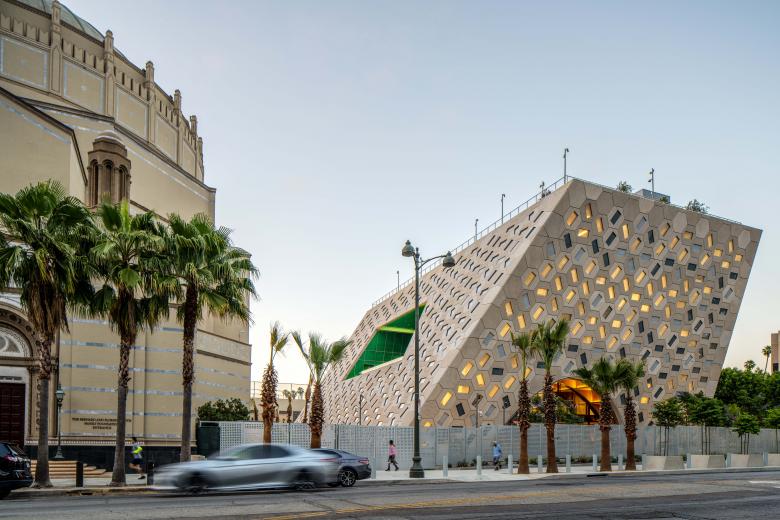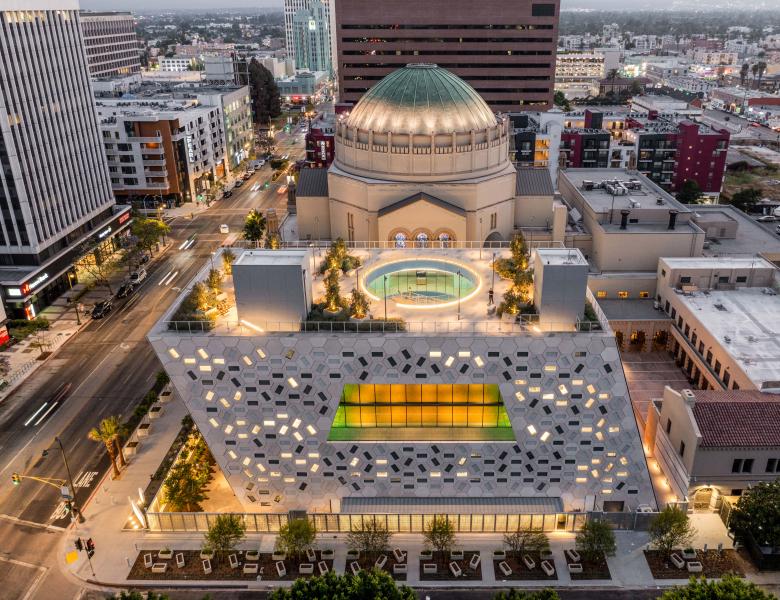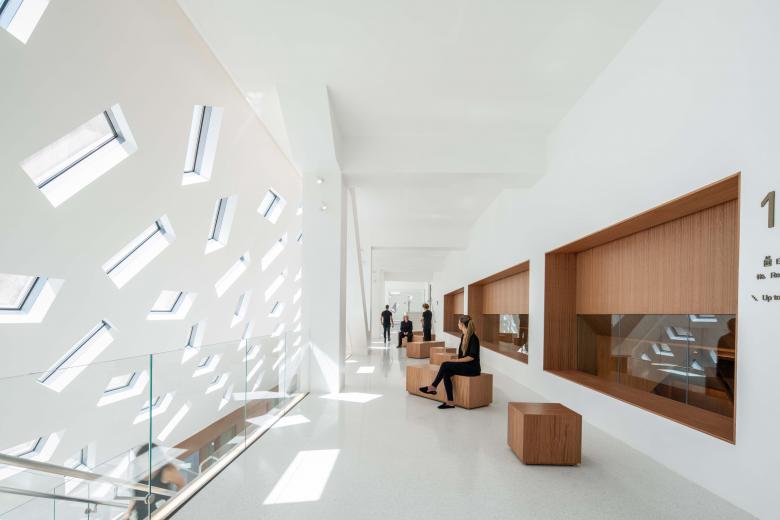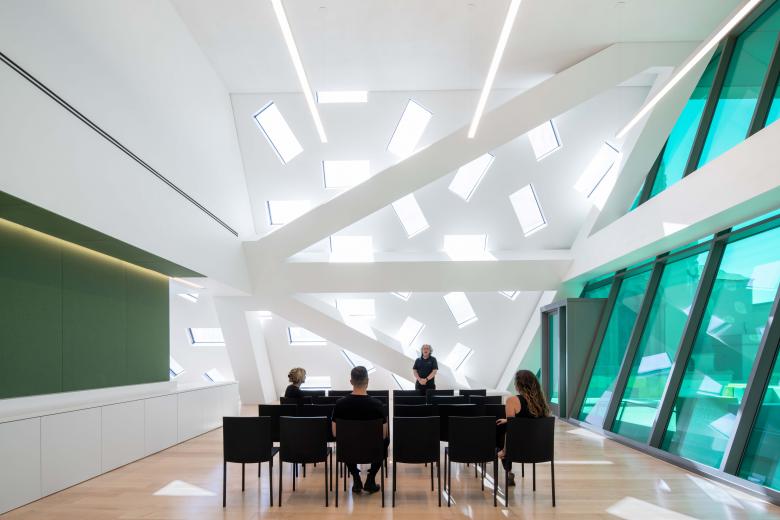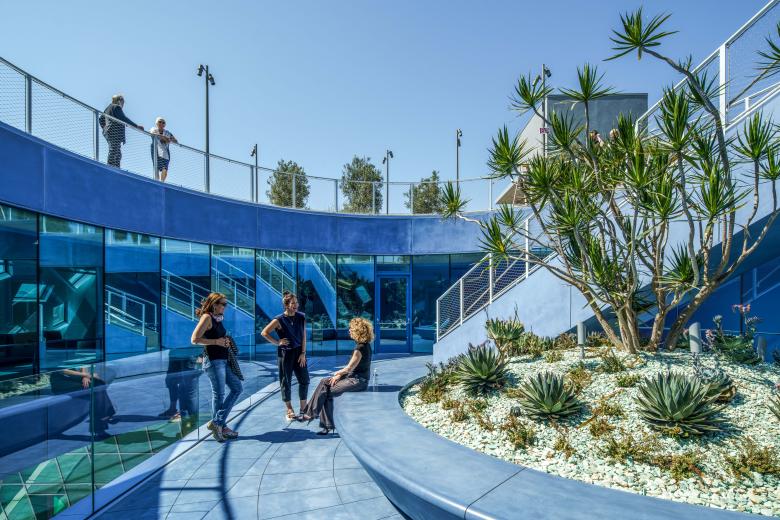OMA's Temple Addition Ready to Open in LA
Construction has wrapped on the Audrey Irmas Pavilion, the first religious commission for OMA New York. The building leans away from the historic Wilshire Boulevard Temple to form a courtyard, bring in natural light, and create a "forward-looking" image for the congregation.
OMA - Office for Metropolitan Architecture won a competition in 2015 to design the building that now bears the name of its lead donor, philanthropist and art collector Audrey Irmas, who is a member of the Wilshire Boulevard Temple congregation and who donated $30 million as part of its three-phase Building Lives Campaign. Three years later, in March 2018, OMA released a rendering of the design by Shohei Shigematsu from the firm's New York office: a carved parallelogram leaning away from the 1929 Byzantine-Revival Sanctuary that was renovated in 2013 in the first phase of the master plan for the temple's full-block Erika J. Glazer Family Campus. The second phase, carried out between the temple renovation and OMA building, focused on two schools, a parking structure, a sports complex, and a social services center.
Photographs released by OMA New York this week reveal a building that stayed true to its rendering. The angular mass is carved by large openings on all four sides: an arcing portal extends from the south, on Wilshire Boulevard, to a school courtyard on the north; trapezoidal openings are located on the east facade overlooking Harvard Boulevard and on the west facade facing the historic temple. Furthermore, a circular opening pierces the building's "fifth facade" — the roof — where a terrace will be used as an event space. According to Shigematsu, these "three interconnected voids make the solid form of the Pavilion strategically yet surprisingly porous, engaging the campus and the city."
More than a thousand small openings punctuate the rest of the exterior, in the form of small rectangular windows set into hexagonal GFRC (glass-fiber-reinforced concrete) panels. With four types of openings (clear glass, shadow box, GFRC infill, and mechanical louver), the horizontal and angular orientation of the openings, and various flat and ridged surface treatments for the hexagonal panels, the massive exterior has a pixelated appearance that is all the more striking after sunset. Inspired by the geometries of the dome of the historic temple, the 1,230 GFRC panels are meant to "enhance the building’s volumetric character while adding a human-scaled texture that breaks down its mass," according to the architects.
Inside are the pavilion's three main spaces "expressed as voids punctured through the building": a main event space (large), a chapel and terrace (medium), and a sunken garden (small). Furthermore, in the architects' words, these three spaces "are interlocked and stacked one atop another to establish vantage points in and out of each space." Even though they are interlocking, the spaces read as distinct thanks to geometric openings (arced, trapezoid, circle) and color (red/brown, green, blue), as can be seen in the photos here.
Although the building is completed the congregation cannot yet take advantage of its new spaces, due to the coronavirus pandemic. With OMA New York's release of photographs of the clearly photogenic building this week, the Wilshire Boulevard Temple is hoping to open the building in January 2022.
